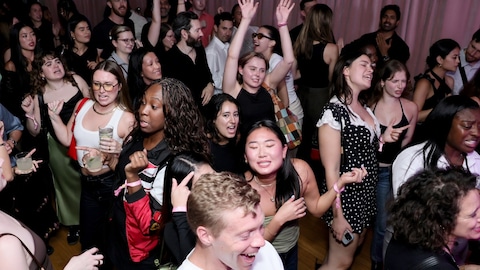From bhajan clubbing to Pope raves—why Gen Z is reviving the oldest party culture ever
Spiritual music has always been a vibe, and the world is finally dancing to it again.

When clips of Archbishop Bernard Bober’s 75th birthday celebrations in Košice started circulating online, the internet absolutely lost its mind. At first glance, it looked like a regular church event—until the camera panned to disco lights washing over the hall, a DJ dropping an upbeat techno track, and a crowd dancing with the kind of enthusiasm usually reserved for music festivals. Someone on social media labelled it the “Pope rave,” and the name stuck instantly.
Within hours, the video was everywhere, with netizens imagining what a Vatican music-festival line-up would look like. But behind the jokes and the virality was something genuinely fascinating: people didn’t find it shocking—they found it strangely relatable and fun.
Because the truth is, mixing spirituality with dance, rhythm, and collective hype isn’t new at all. It isn’t even a trend. It’s one of the oldest human instincts. And the world, led by an extremely online Gen Z, is simply tapping back into it.
Bhajan clubbing didn’t come out of nowhere
India’s own “bhajan clubbing” movement might feel like a quirky, hyper-modern subculture—devotional beats, incense-smoke aesthetics, and crowds vibing to mantras under soft lighting—but its roots go way deeper. Humanity has always blended music, spirituality, and community into shared emotional highs.
Think church choirs lifting the room with layered harmonies. Think temple bhajans where the dholak takes over and everyone claps in perfect rhythm. Think Sufi qawwali nights that escalate into collective ecstasy. These were the OG raves: immersive, emotional, and transcendent, long before neon wristbands and festival passes existed.
So when young Indians remix bhajans into electronic beats or sway together to a mantra drop, it isn’t rebellion. It’s a reconnection—to culture, to energy, to something timeless.
The global return of spiritual party culture
The so-called “Pope rave” simply showed the world what India, Southeast Asia, and spiritual communities everywhere have been doing forever: turning devotion into a shared experience that feels alive, immersive, and—honestly—very fun.
Pop culture has been hinting at this for decades, too. The Sister Act movies practically turned gospel music into a global party, with Whoopi Goldberg leading choirs that danced, belted, and brought pure joy to church music. Those films made gospel feel accessible, cool, and deeply communal—long before TikTok edits and DJ-led circles existed. For many, they were the first introduction to the idea that sacred music could also be high-energy, expressive, and wildly entertaining.
Wellness events abroad now feature DJ-led mantra circles. TikTok is full of “holy beats edits” mashing sacred vocals with pop rhythms. And in India, bhajan clubbing has become the next big youth-led cultural movement, proving that spirituality doesn’t need to be stiff or separated from social spaces.
This wave isn’t about religion; it’s about what sacred music does to the human brain. The chants, the repetition, the rhythm… they create a natural high that feels emotional, euphoric, and almost magical.
A rave, but make it divine
Whether it’s priests vibing under coloured lights in Slovakia or Indian Gen Z dancing to an electronic “Hare Rama Hare Krishna” chorus, one thing is clear: sacred sound is trending again. And honestly, it’s been bubbling for years—just look at the global rise of gospel powerhouses like Hillsong, Maverick City Music, and Elevation Worship. Their concerts feel less like traditional services and more like stadium-scale spiritual raves, with thousands singing, swaying, and riding the emotional high of collective music.
Call it a Pope rave. Call it bhajan clubbing. Call it divine EDM. Whatever the name, the world is ready for a party with a little more soul—and they’ve realised there’s no harm in mixing devotion with a bit of drama and fun.
Lead image: Getty
Also read: Is 'bhajan clubbing' the coolest new way to party in India?
Also read: The “fridge cigarette” is Gen Z’s latest coping ritual—and it’s surprisingly wholesome